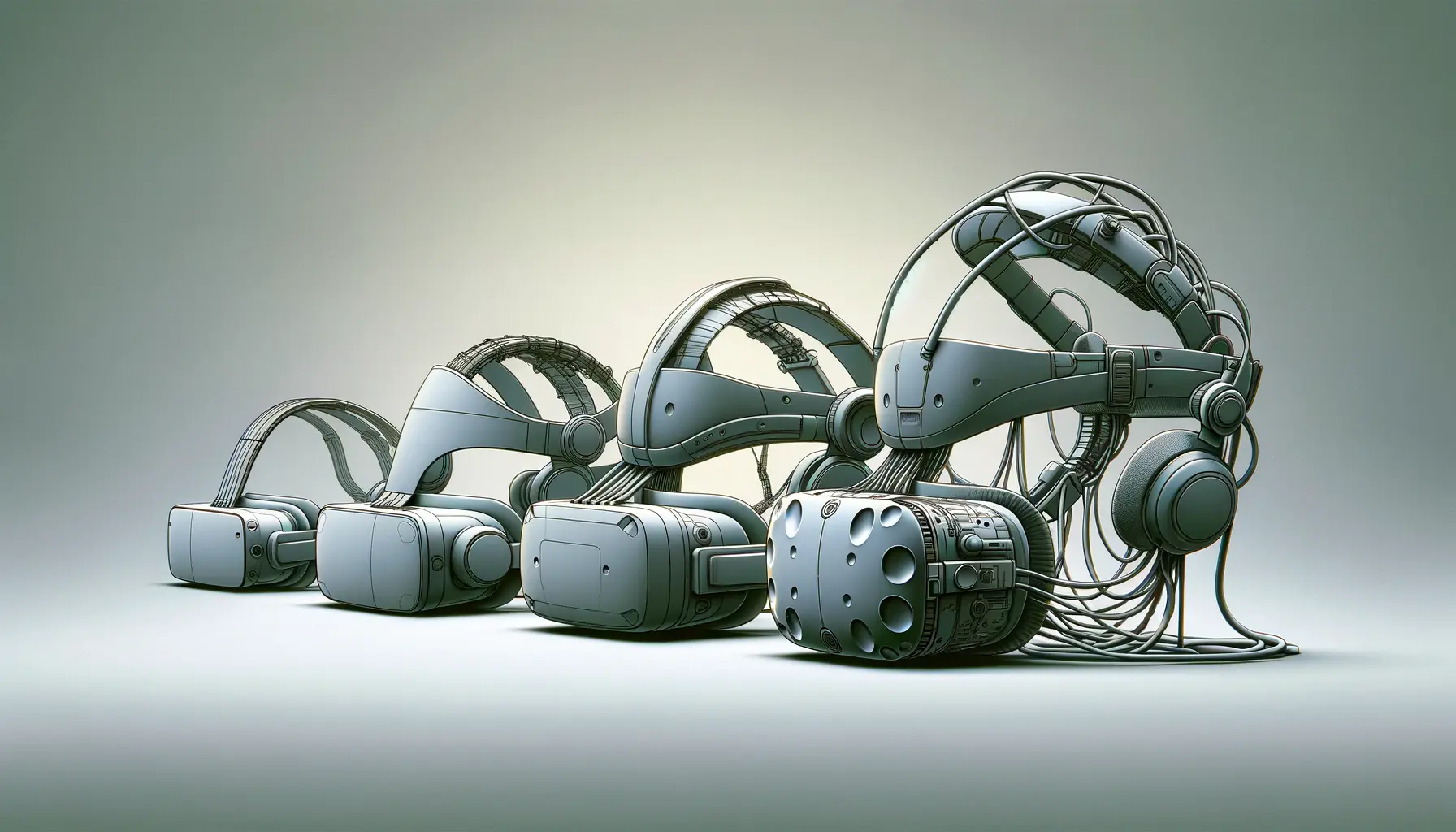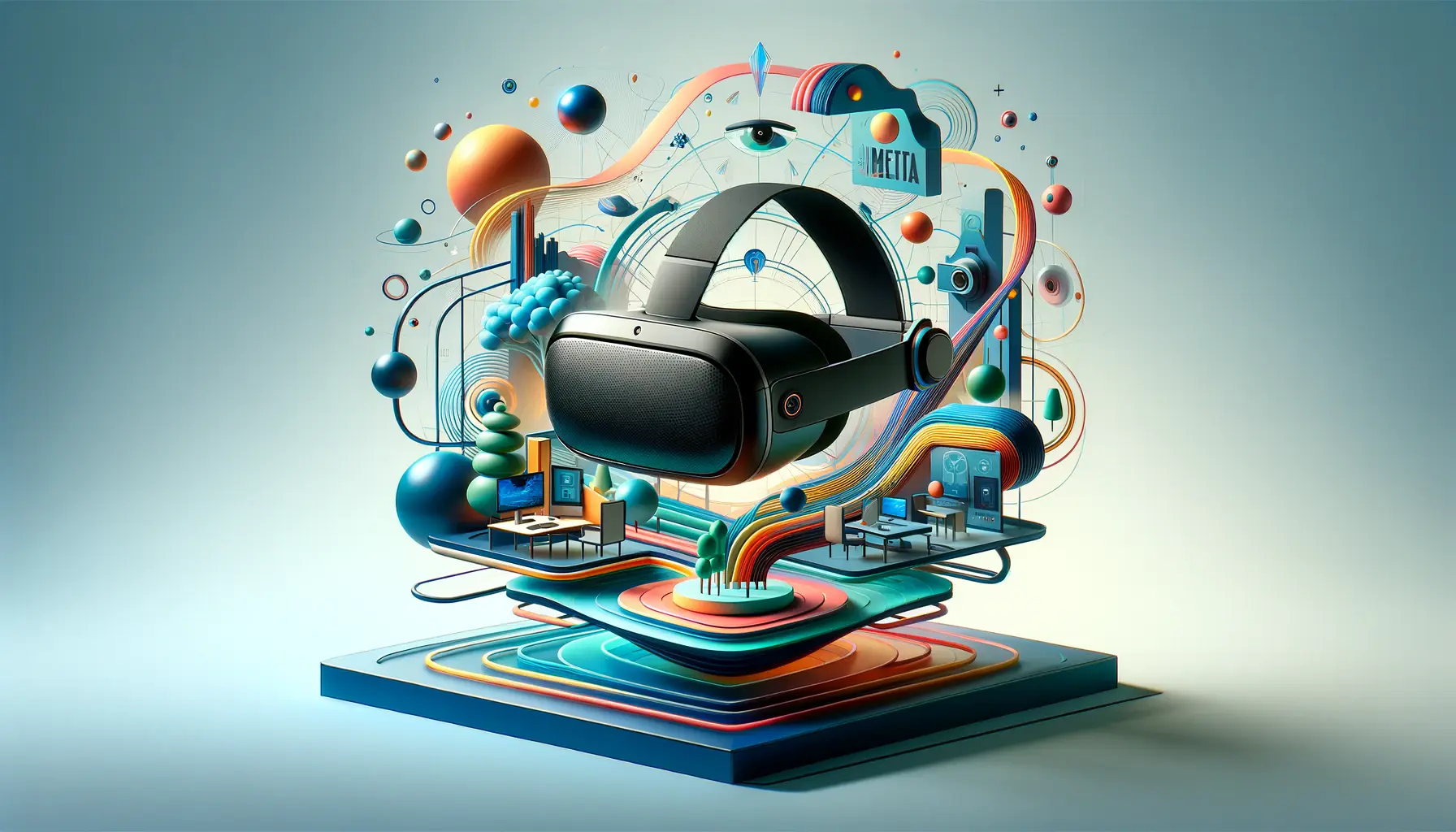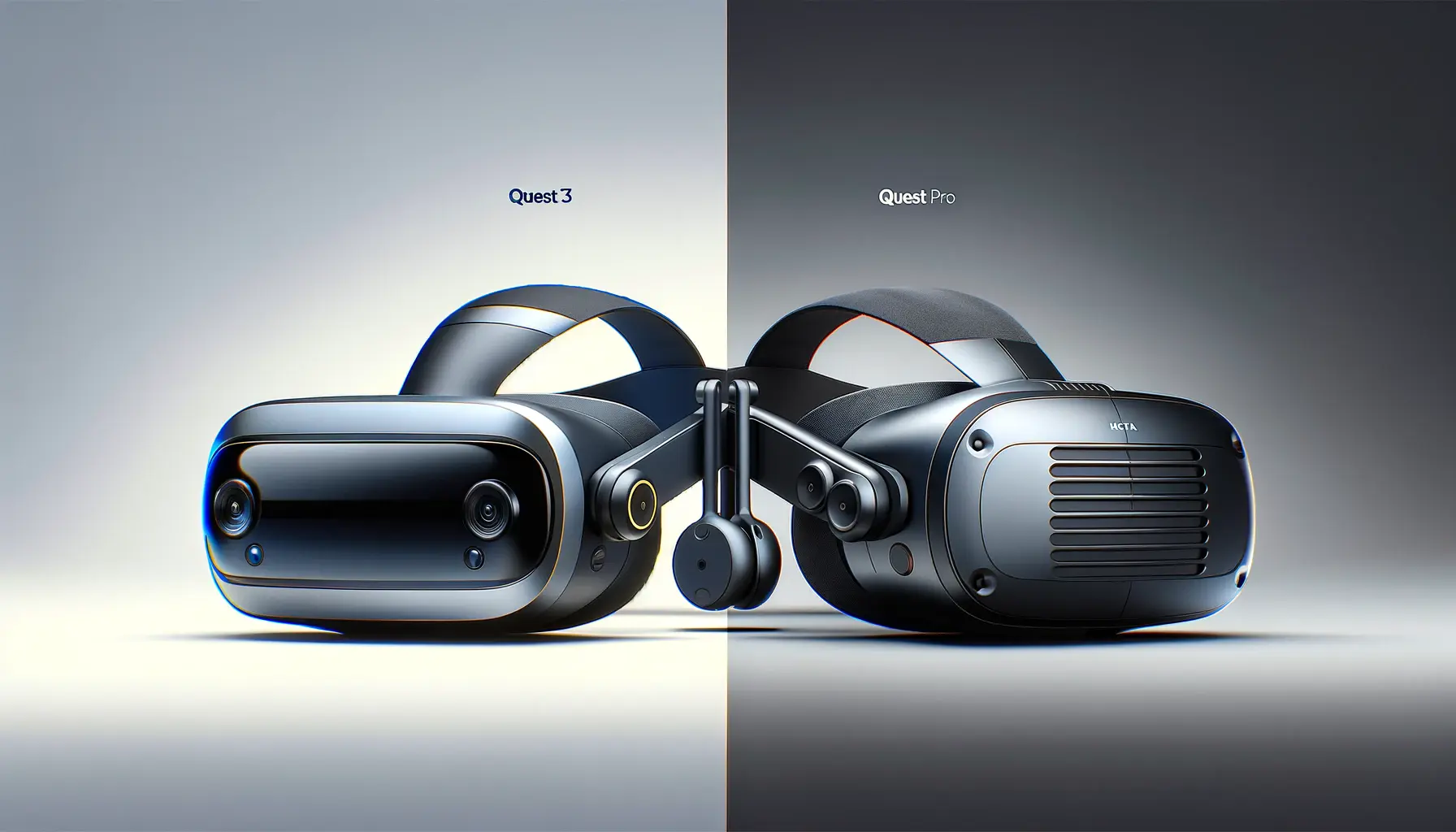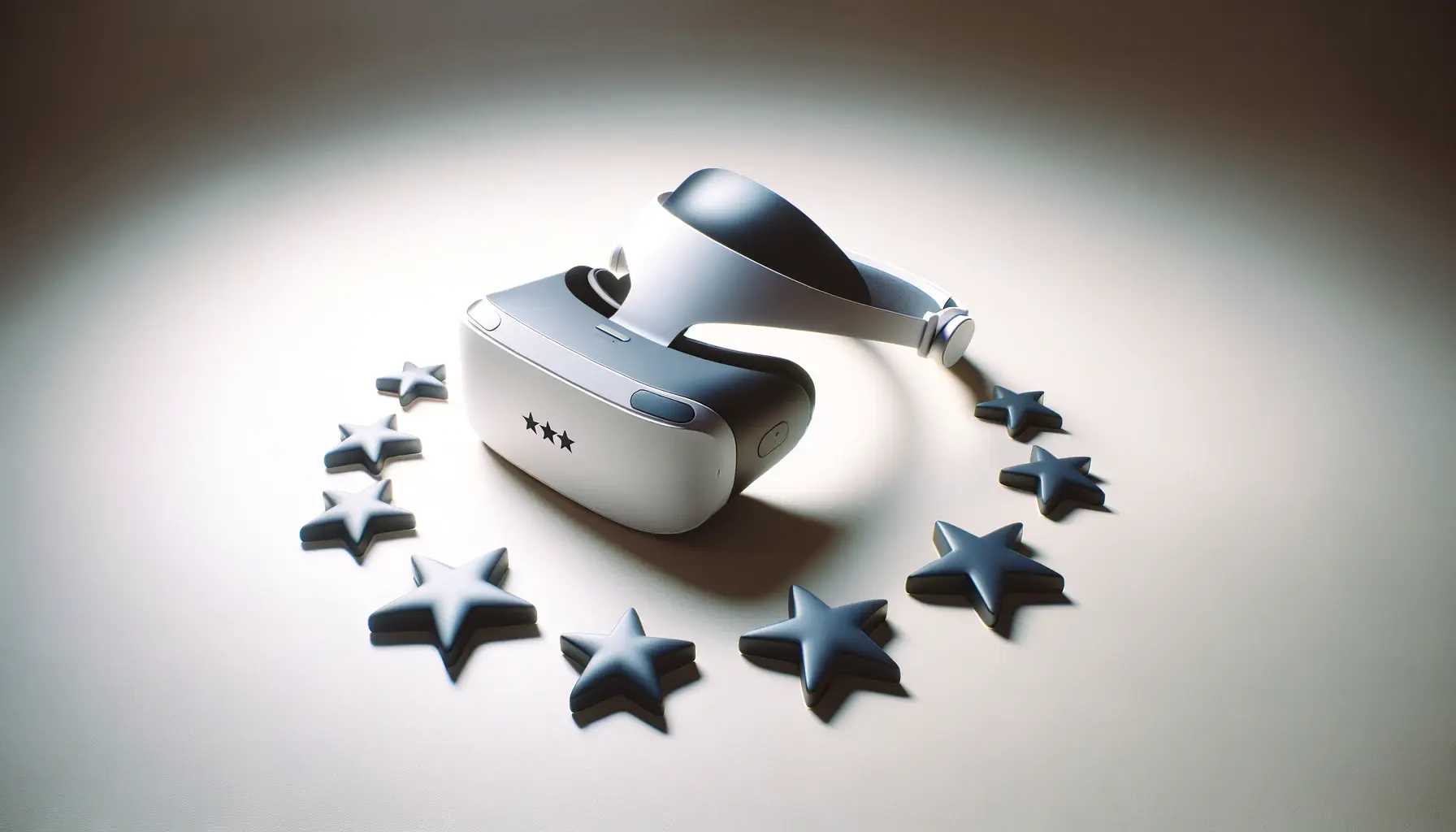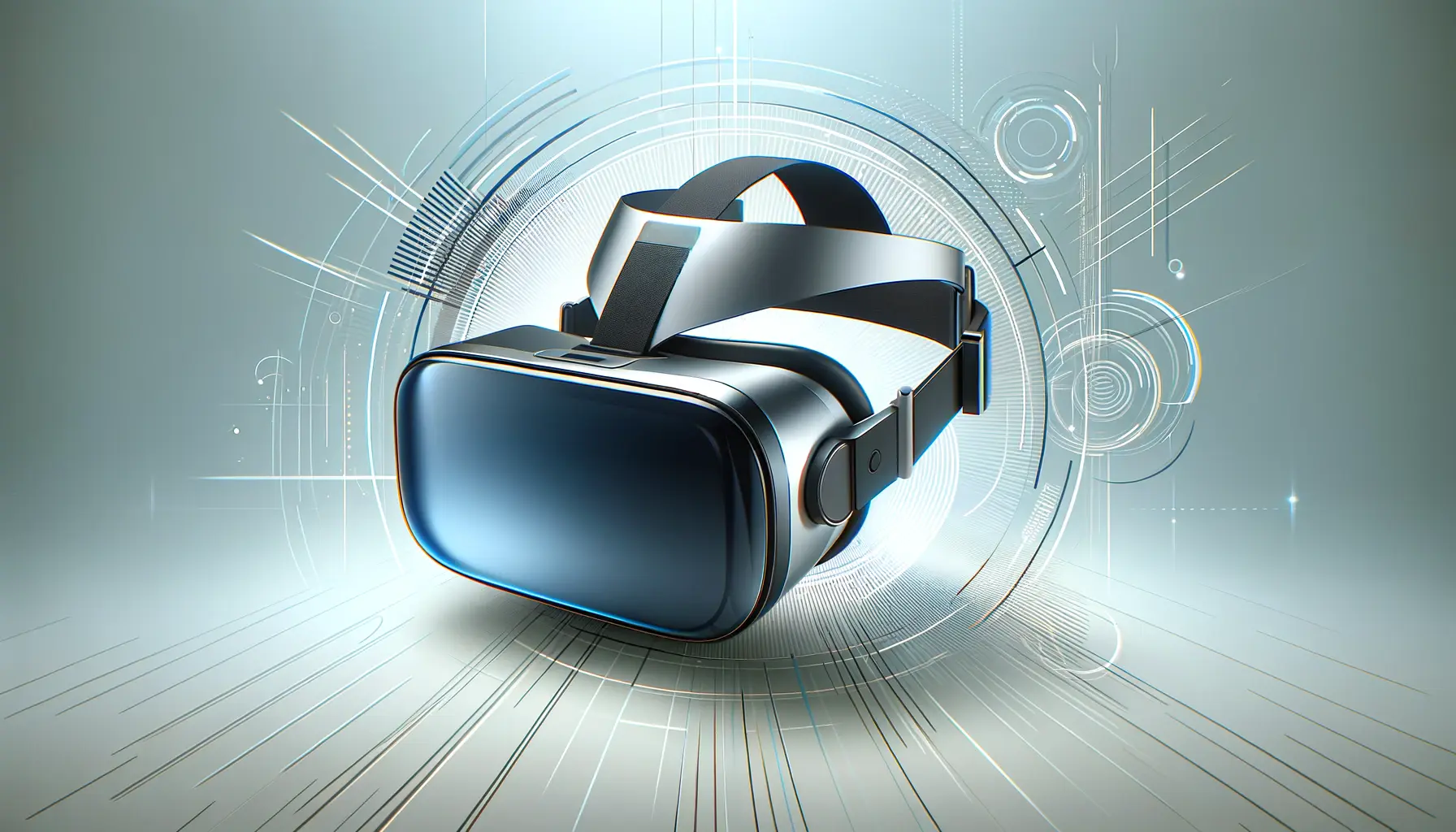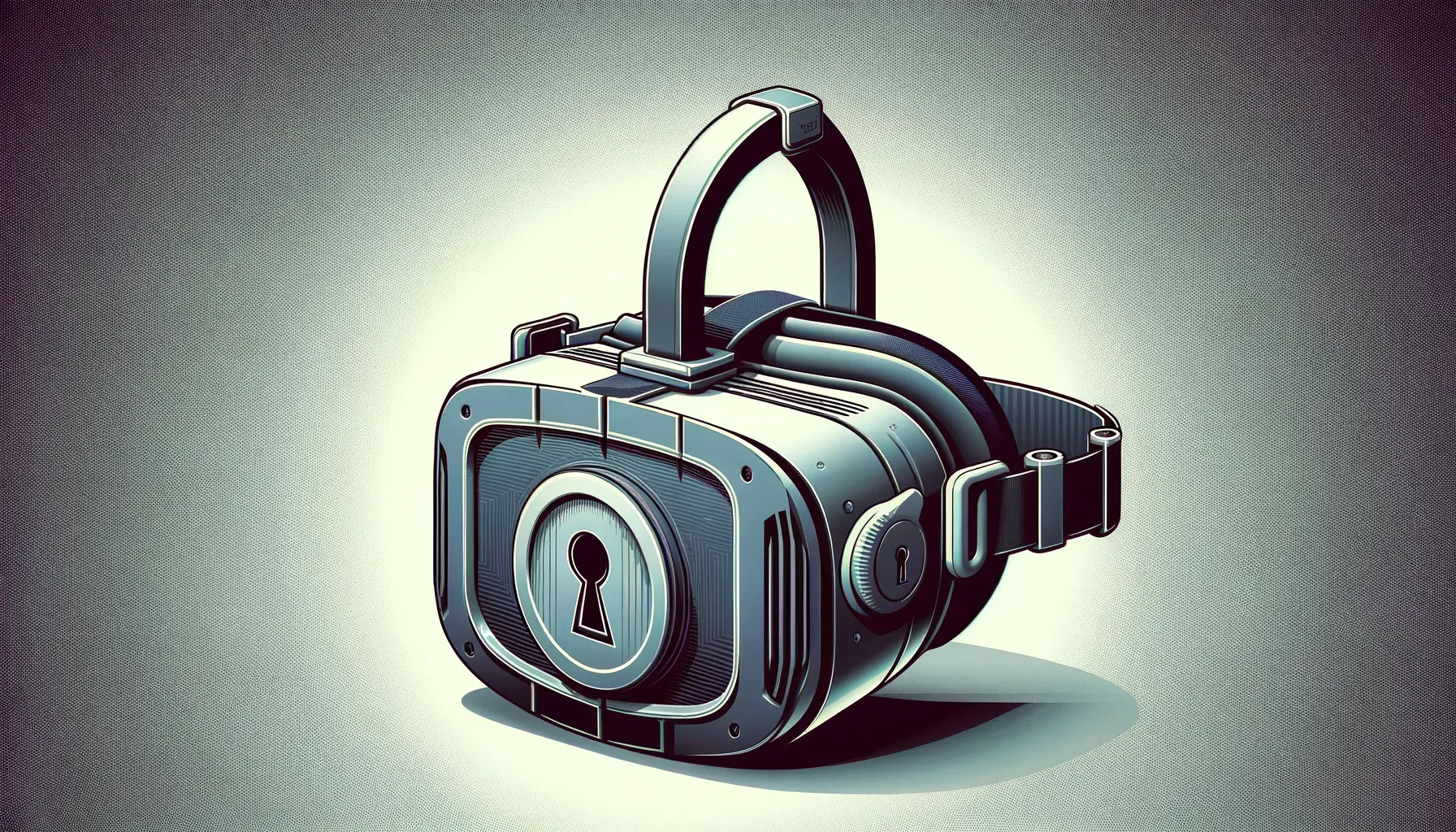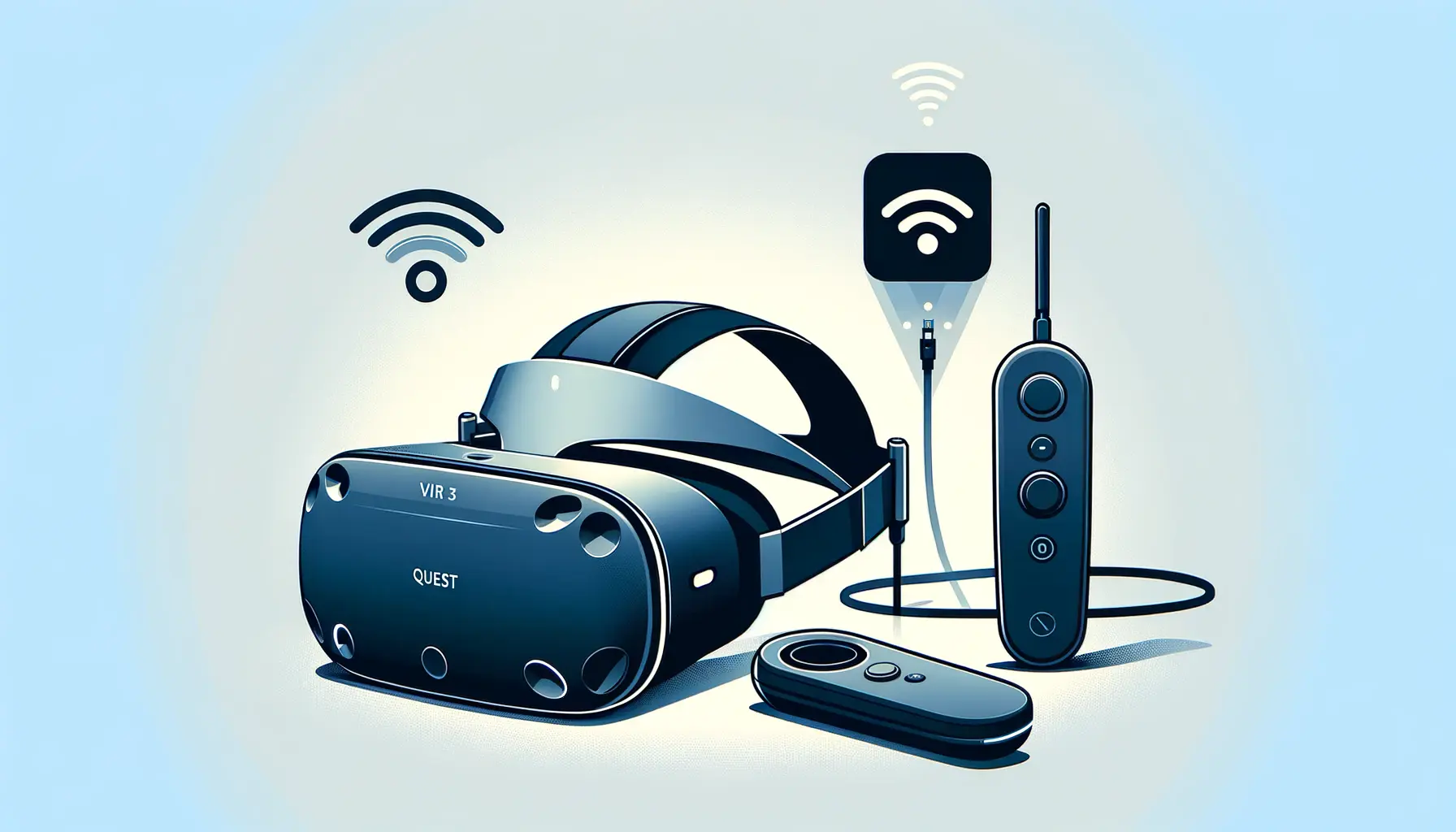The journey of virtual reality headsets has been nothing short of revolutionary, with Meta Quest 3 standing as a testament to the rapid advancements in technology and design aesthetics.
As the latest iteration in Meta’s lineup of VR devices, the Quest 3 not only pushes the boundaries of immersive entertainment but also showcases significant design evolution from its predecessors.
This article delves into the intricate design journey of Meta Quest 3, exploring how it has set new standards in the VR industry.
The Meta Quest 3 emerges as a beacon of innovation, embodying the culmination of years of research, user feedback, and technological advancements.
Its design philosophy reflects a meticulous balance between form and function, aiming to provide users with an unparalleled virtual reality experience.
The Quest 3’s design evolution is not just about aesthetic enhancements; it’s a comprehensive overhaul that addresses usability, comfort, and performance, making VR more accessible and enjoyable for a broader audience.
- Understanding the Design Philosophy
- Technological Advancements Behind the Design
- Impact on User Experience and Accessibility
- Design Innovations in Mixed Reality
- Advancements in Immersive Gaming Experiences
- Future-Proofing Through Modular Design
- Enhancing Professional and Educational Applications
- Embracing the Future with Meta Quest 3
- Meta Quest 3: Frequently Asked Questions
Understanding the Design Philosophy
Form Meets Function
The design of Meta Quest 3 is a masterclass in how form meets function in the realm of consumer electronics.
The sleek, streamlined appearance of the Quest 3 is the result of an intentional design strategy focused on enhancing user comfort and device performance.
By reducing the overall weight and optimizing the weight distribution, Meta has significantly improved the wearability of the Quest 3, allowing users to engage in longer VR sessions without discomfort.
This evolution in design also extends to the materials used in the Quest 3.
The choice of lightweight, durable materials not only contributes to the device’s aesthetic appeal but also ensures its longevity.
The tactile surfaces and ergonomic grip of the controllers are other highlights, designed to provide a more intuitive and immersive interaction with virtual environments.
Enhanced User Interface and Controls
The Meta Quest 3 introduces an enhanced user interface that is both intuitive and user-friendly, catering to both VR veterans and newcomers.
The redesign of the UI aims to streamline navigation and make it easier for users to access their favorite games and applications.
This focus on usability is a key aspect of the Quest 3’s design evolution, reflecting Meta’s commitment to creating an inclusive VR ecosystem.
Moreover, the controllers of the Quest 3 have undergone significant improvements, offering more precise tracking and feedback.
This not only enhances the overall gaming experience but also opens up new possibilities for VR applications in education, training, and professional development.
The design of the controllers is a critical component of the Quest 3’s success, embodying the device’s philosophy of merging advanced technology with user-centric design.
The Meta Quest 3’s design evolution marks a significant milestone in the VR industry, setting new standards for immersive technology and user experience.
Technological Advancements Behind the Design
The Meta Quest 3’s leap in design is not just skin deep; it’s powered by significant technological advancements that redefine what’s possible in virtual reality.
These innovations are not merely incremental updates but transformative changes that enhance every aspect of the VR experience.
From the core processing power to the immersive audio-visual capabilities, the Quest 3 is a marvel of modern engineering.
At the heart of the Quest 3’s design evolution is its advanced processing unit.
This next-generation chipset delivers unparalleled performance, enabling complex VR environments to be rendered with astonishing detail and fluidity.
This leap in processing power is complemented by:
- Improved battery life, ensuring users can immerse themselves in virtual worlds for extended periods without interruption.
- A more efficient cooling system, designed to keep the device at an optimal temperature even during intense use.
Display and Visual Enhancements
The Quest 3’s display technology has seen a significant overhaul, offering users a visual experience that is closer to reality than ever before.
Key improvements include:
- A higher resolution display, providing crystal-clear images that bring virtual worlds to life with unprecedented clarity.
- Advanced optics technology, reducing glare and improving color accuracy for a more immersive and comfortable viewing experience.
Audio Innovations
Complementing the visual enhancements, the Quest 3’s audio system has been meticulously designed to offer an immersive sound experience that is as realistic as its visuals.
Innovations in audio design include:
- 3D spatial audio technology, allowing users to pinpoint sounds in a 360-degree space, enhancing the realism of VR environments.
- Customizable audio settings, giving users the flexibility to tailor the sound experience to their preferences and needs.
The integration of these technological advancements into the Quest 3’s design not only enhances the user experience but also expands the possibilities of VR applications beyond gaming, into fields such as education, training, and professional development.
Impact on User Experience and Accessibility
The design evolution of Meta Quest 3 significantly impacts user experience and accessibility, marking a pivotal shift in how virtual reality can be integrated into daily life.
The Quest 3’s design innovations are not merely about improving aesthetics or hardware performance; they are fundamentally about making VR more accessible and enjoyable for a wider audience.
This commitment to user experience is evident in several key areas.
Firstly, the ergonomic design of the Quest 3 ensures that users of all ages and abilities can comfortably enjoy VR.
This inclusivity is further supported by:
- Adjustable head straps and interpupillary distance settings, accommodating different head sizes and visual needs.
- A user-friendly interface that simplifies navigation and reduces the learning curve for new users.
Enhancing Social Connectivity
The Quest 3’s design also prioritizes social connectivity, recognizing the importance of shared experiences in virtual spaces.
Through integrated social features and multiplayer capabilities, users can:
- Connect with friends and family in virtual environments, regardless of physical distance.
- Participate in community events, workshops, and collaborative projects, fostering a sense of belonging and community within the VR ecosystem.
Breaking Down Barriers to Entry
Another significant impact of the Quest 3’s design is its role in breaking down barriers to entry for VR technology.
By addressing common obstacles such as cost, complexity, and comfort, Meta has made VR more accessible to a broader audience.
Key initiatives include:
- Competitive pricing strategies that make high-quality VR experiences more affordable.
- Comprehensive support resources and tutorials that empower users to explore VR’s full potential with confidence.
The Meta Quest 3’s design evolution is a testament to the potential of VR to enrich our lives in myriad ways, from enhancing education and professional development to providing new avenues for entertainment and social interaction.
Design Innovations in Mixed Reality
The Meta Quest 3 stands at the forefront of mixed reality (MR) technology, thanks to its design innovations that seamlessly blend the physical and virtual worlds.
This integration of MR into the Quest 3’s design is not just an enhancement; it’s a transformation that expands the device’s utility and appeal.
The Quest 3’s MR capabilities are built on a foundation of advanced sensors and cameras, enabling a range of experiences that were previously unimaginable.
Key components of the Quest 3’s MR features include:
- High-resolution passthrough cameras that provide a clear and accurate view of the real world, allowing for more immersive and interactive MR experiences.
- Depth sensors that accurately map the user’s environment, enabling virtual objects to interact realistically with the physical space.
Real-World Applications of MR
The integration of MR technology into the Quest 3 opens up a plethora of real-world applications, from professional training and education to creative expression and entertainment.
For instance:
- In education, students can interact with 3D models of historical artifacts or explore virtual reconstructions of ancient cities, enhancing learning through immersive experiences.
- In professional training, MR can simulate real-world scenarios, allowing for hands-on practice in a safe and controlled environment.
Enhancing Creative and Social Experiences
Beyond practical applications, the Quest 3’s MR capabilities also enrich creative and social experiences.
Users can:
- Create and share mixed reality content, blending digital art with the physical world in innovative ways.
- Host virtual gatherings in realistically rendered environments, bridging the gap between virtual meetings and physical presence.
The Quest 3’s MR features not only demonstrate Meta’s commitment to pushing the boundaries of VR technology but also highlight the potential of MR to revolutionize how we interact with technology and each other.
Advancements in Immersive Gaming Experiences
The Meta Quest 3 has significantly elevated the standard for immersive gaming experiences through its innovative design and technological advancements.
This evolution in VR gaming is not just about higher resolutions or more detailed graphics; it’s about creating a more immersive, interactive, and emotionally engaging gaming experience.
The Quest 3 achieves this by leveraging its advanced hardware and software capabilities to offer gamers a level of immersion previously unattainable.
Central to the Quest 3’s gaming experience are:
- Ultra-responsive controllers that provide tactile feedback, enhancing the sense of touch and interaction within virtual environments.
- Customizable avatars and environments that allow players to personalize their gaming experience, fostering a deeper connection to the virtual world.
Expanding the Gaming Ecosystem
The Quest 3’s design innovations extend beyond the device itself, influencing the broader VR gaming ecosystem.
Developers now have access to more powerful tools and platforms, enabling them to create complex, richly detailed worlds that were previously beyond the scope of VR technology.
This has led to:
- An increase in the variety and quality of games available, catering to a wide range of interests and preferences.
- New genres and gameplay mechanics that leverage the unique capabilities of VR, offering players novel and exciting gaming experiences.
Community and Multiplayer Features
Another significant aspect of the Quest 3’s impact on gaming is its emphasis on community and multiplayer features.
By making it easier for players to connect, share, and compete within virtual spaces, the Quest 3 fosters a vibrant and engaged gaming community.
Features such as:
- Seamless multiplayer integration, allowing friends to join games together with minimal setup.
- Social sharing tools, enabling players to share their achievements, highlights, and custom content with a broader audience.
The Meta Quest 3’s advancements in immersive gaming experiences underscore the device’s role in shaping the future of VR gaming, highlighting the potential for even more groundbreaking developments in the years to come.
Future-Proofing Through Modular Design
The Meta Quest 3 introduces a forward-thinking approach to VR headset design with its modular components, ensuring the device not only meets the current demands of users but is also prepared for future advancements.
This modular design philosophy represents a significant shift in how VR devices are conceptualized, offering users the ability to upgrade individual components without needing to replace the entire headset.
Key benefits of the Quest 3’s modular design include:
- Enhanced longevity and sustainability, as users can update or replace parts as new technologies become available or to repair damaged components.
- Customization options that allow users to tailor the device to their specific needs and preferences, whether for gaming, professional use, or content creation.
Impact on the VR Ecosystem
The modular design of the Quest 3 has broader implications for the VR ecosystem, encouraging innovation and flexibility among accessory manufacturers and software developers.
This ecosystem approach fosters a vibrant market for VR accessories and applications, including:
- Specialized controllers and input devices designed for specific applications or games.
- Enhanced display modules or audio systems that can be swapped in to improve the sensory experience.
Adapting to User Feedback and Technological Advances
Moreover, the modular design allows Meta to rapidly adapt to user feedback and incorporate technological advances without waiting for the next full model release.
This agility benefits users by providing:
- Timely access to the latest VR technologies and features.
- A more personalized VR experience that evolves with the user’s changing needs and interests.
Contrary to concerns, the modular design does not compromise the Quest 3’s performance or durability. Instead, it enhances the device’s value and appeal by making VR technology more adaptable, personalized, and future-proof.
Enhancing Professional and Educational Applications
The Meta Quest 3’s design evolution significantly impacts not just gaming but also professional and educational applications.
By harnessing the power of VR, the Quest 3 offers innovative solutions to traditional challenges in these fields, making learning and work more interactive, engaging, and effective.
For professionals, the Quest 3 provides:
- Immersive training environments that simulate real-world scenarios, allowing for hands-on experience without the associated risks or costs.
- Virtual collaboration spaces where teams can work together on projects from anywhere in the world, breaking down geographical barriers.
Revolutionizing Education
In the realm of education, the Quest 3 opens up new avenues for learning by:
- Offering interactive 3D models and simulations that provide students with a deeper understanding of complex subjects.
- Enabling virtual field trips to historical sites, museums, and even outer space, making education a more captivating experience.
Supporting Healthcare and Therapy
Beyond education and professional training, the Quest 3’s design innovations extend into healthcare, offering new tools for therapy and patient care.
Applications include:
- Virtual reality exposure therapy (VRET) for treating phobias and PTSD, providing a safe environment for patients to confront and work through their fears.
- Rehabilitative applications that use VR to help patients regain motor skills and coordination after injuries.
The Meta Quest 3’s impact on professional, educational, and healthcare fields underscores the device’s versatility and the transformative potential of VR technology across various sectors.
Embracing the Future with Meta Quest 3
The Meta Quest 3 represents a significant leap forward in the realm of virtual reality, offering a glimpse into the future of immersive technology.
Through its innovative design, advanced technological features, and commitment to enhancing user experience, the Quest 3 has set a new benchmark for what VR devices can achieve.
As we have explored, the evolution of the Quest 3’s design is not merely aesthetic but encompasses a broad spectrum of improvements that cater to gamers, professionals, educators, and beyond.
The Pinnacle of VR Innovation
The Meta Quest 3’s journey from concept to reality reflects Meta’s dedication to pushing the boundaries of VR technology.
With its sleek design, modular components, and enhanced mixed reality capabilities, the Quest 3 is poised to revolutionize how we interact with digital environments.
It stands as a testament to the potential of VR to transcend entertainment, offering valuable tools for education, professional development, and even healthcare.
A Catalyst for Broader Adoption
One of the most significant impacts of the Quest 3 is its potential to drive broader adoption of VR technology.
By addressing previous barriers such as accessibility, comfort, and cost, Meta has made high-quality VR experiences more attainable for a wider audience.
This democratization of VR opens up endless possibilities for its application across various sectors, from enhancing remote collaboration to revolutionizing how we learn and explore new concepts.
- The Quest 3’s ergonomic design and intuitive user interface make it accessible to users of all ages and technical abilities.
- Its modular design ensures that the device can evolve with technological advancements, offering a future-proof solution to VR enthusiasts and professionals alike.
- The integration of mixed reality features expands the device’s utility beyond traditional gaming, enabling innovative applications in education, training, and creative expression.
In conclusion, the Meta Quest 3 embodies the next step in the evolution of virtual reality, merging cutting-edge technology with user-centric design to create a device that is both powerful and accessible.
As VR continues to evolve, the Quest 3 stands as a beacon of innovation, offering a window into a future where virtual and physical realities are seamlessly intertwined.
Whether for gaming, learning, or professional development, the Meta Quest 3 offers an unparalleled immersive experience, heralding a new era of digital interaction.
Meta Quest 3: Frequently Asked Questions
Explore the most common inquiries about the Meta Quest 3 to enhance your understanding and experience with this cutting-edge VR headset.
Meta Quest 3 features advanced processing power, higher resolution displays, improved ergonomics, and enhanced mixed reality capabilities.
Yes, its advanced features and mixed reality capabilities make it suitable for various professional applications, including training and collaboration.
With its ergonomic design and adjustable features, the Quest 3 is built for comfort during extended use.
Yes, it offers seamless multiplayer integration for playing and connecting with friends in virtual environments.
The modular design allows for easy upgrades and customization, enhancing the headset’s longevity and user experience.
It’s used for immersive learning experiences, including interactive 3D models and virtual field trips.
While some features require internet, many games and applications can be used offline after initial setup.
The Quest 3 offers extended battery life, supporting hours of continuous use on a single charge.
